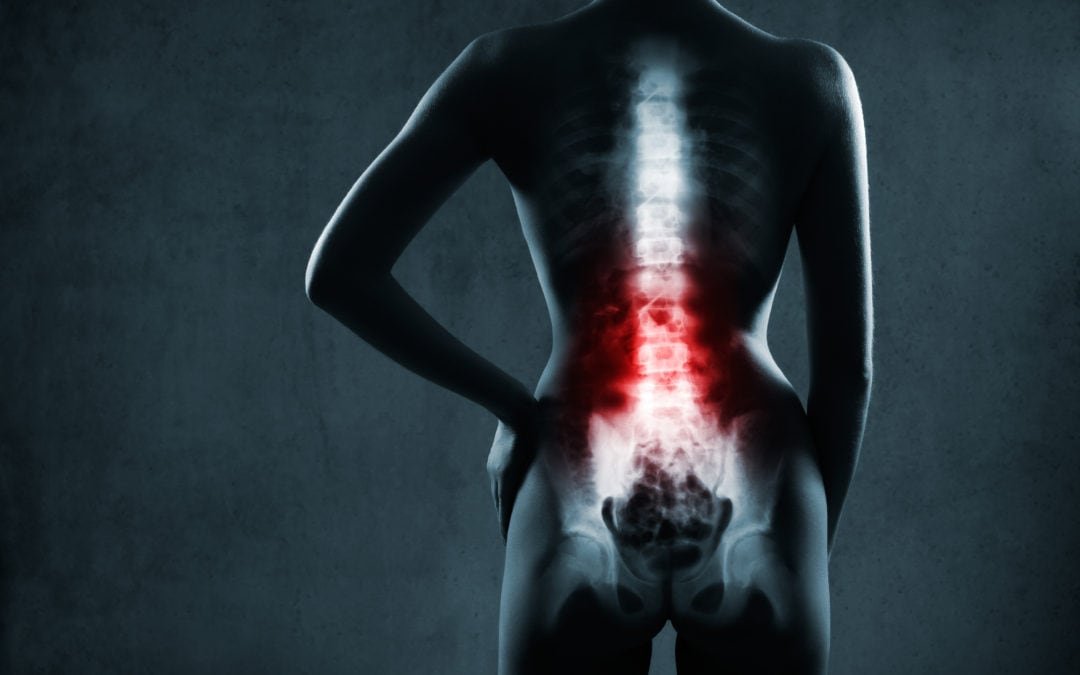The vertebrae of the spine perfectly align to form the vertebral column and spinal canal. When the vertebrae change shape, as they commonly due with aging, the spinal canal narrows and compresses the spinal cord in a condition known as spinal stenosis. This condition is most common in the lumbar spine, therefore we will be discussing causes and symptoms related to lumbar spinal stenosis.
If you were told you have spinal stenosis, here is everything you need to know:
Causes of Spinal Stenosis
Osteoarthritis is the number one cause of spinal stenosis. Patients with osteoarthritis can experience any combination, or all of the following spinal stenosis contributing factors:
1. A decrease in disc height. As the discs age, they lose water content. Dry discs decrease in height and cause spinal foramina to collapse.
2. Bone spurs. When osteoarthritis reaches the point where the cartilage is substantially worn away, bone-on-bone rubbing occurs and bone spurs, which protrude into the spinal canal, can develop.
3. An increase in ligament size. Osteoarthritis-related inflammation may cause the ligaments that surround the spine to increase in size and narrow the spinal canal.
Once spinal stenosis occurs, a host of unpleasant symptoms may present.
Symptoms of Spinal Stenosis
The most common symptoms are:
• Back pain
• A burning sensation in the buttocks and/or legs
• Numbness in the buttocks and/or legs
• Back and/or leg weakness
Luckily, these symptoms can be effectively treated using numerous available treatment options.

Illustration 1- Spinal stenosis compresses the spinal cord
Treatment Options for Spinal Stenosis
Once a neurosurgeon has diagnosed a patient with spinal stenosis, conservative, non-surgical treatment options are prescribed. They include:
1. Activity modification. Decreasing or stopping symptom-producing activities decrease the amount of pressure placed on the spinal cord.
2. Nonsteroidal anti-inflammatory drugs (NSAIDs). Over-the-counter or prescription medications help decrease inflammation and pain.
3. Physical therapy. Stretching and strengthening the muscles, ligaments, and tissues of the spine take the pressure of the vertebrae and spinal cord.
4. Steroid injections. Powerful anti-inflammatory medications are injected into arthritis affected areas to help decrease inflammation and pain.
When these options fail to adequately decrease symptoms, surgical intervention may be necessary. Because spine surgery is more advanced than ever, surgeries to correct spinal stenosis can now be performed minimally invasive where certain surgical complications can be reduced.
Seeking Treatment for Spinal Stenosis
If you’ve been diagnosed with spinal stenosis or think you might have it, please contact our NYC office to arrange an appointment! Regardless of the severity of your condition, we will have a treatment option that’s right for you. The road to symptom-free living starts when you walk through our doors.
Dr. Patrick Senatus is a Board Certified Neurosurgeon in New York City with extensive experience in Minimally Invasive and Restorative Spine Surgery. Dr. Senatus employs a personalized patient-centered approach that prioritizes optimum functional outcome and well-being. Each consultation begins with a comprehensive evaluation by Dr. Senatus designed to create an individualized evidence based treatment plan which includes the patient, family, and collaborating providers.
Following a conservative treatment philosophy, Dr. Senatus offers his patients solutions using the most advanced minimally invasive spine surgery. His approach is to perform the most effective and least invasive intervention available, specifically tailored to each patient, guided by the principal that surgical options be considered only after all reasonable non-operative therapies have been exhausted. Returning his patients to a functional pain free lifestyle is the ultimate objective. Contact us today to schedule an appointment!


Recent Comments